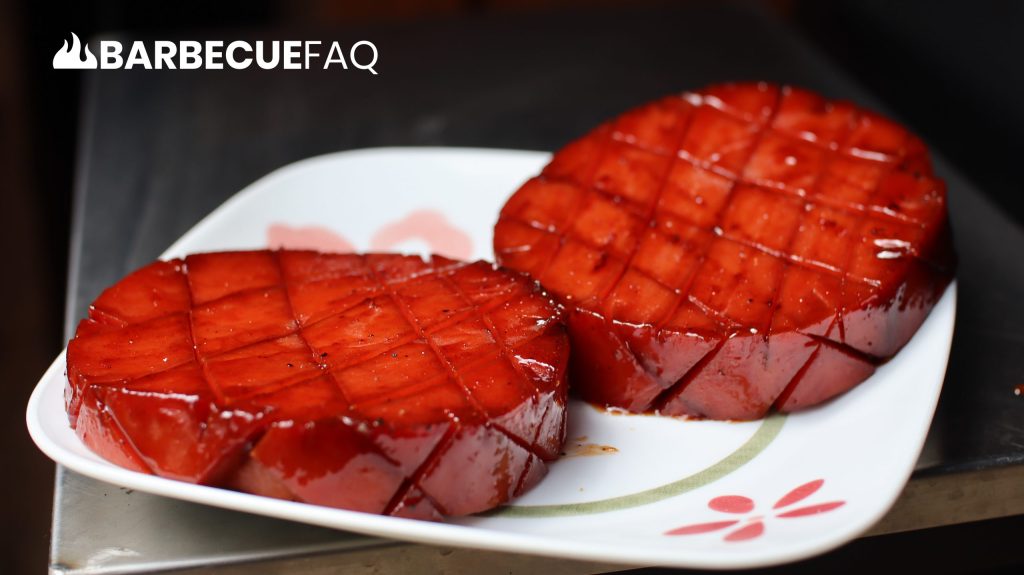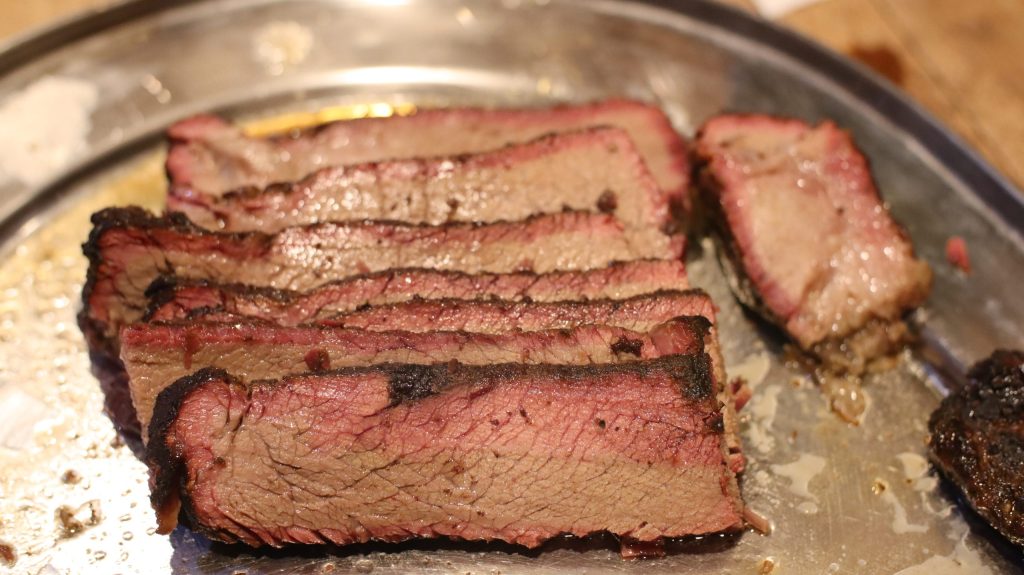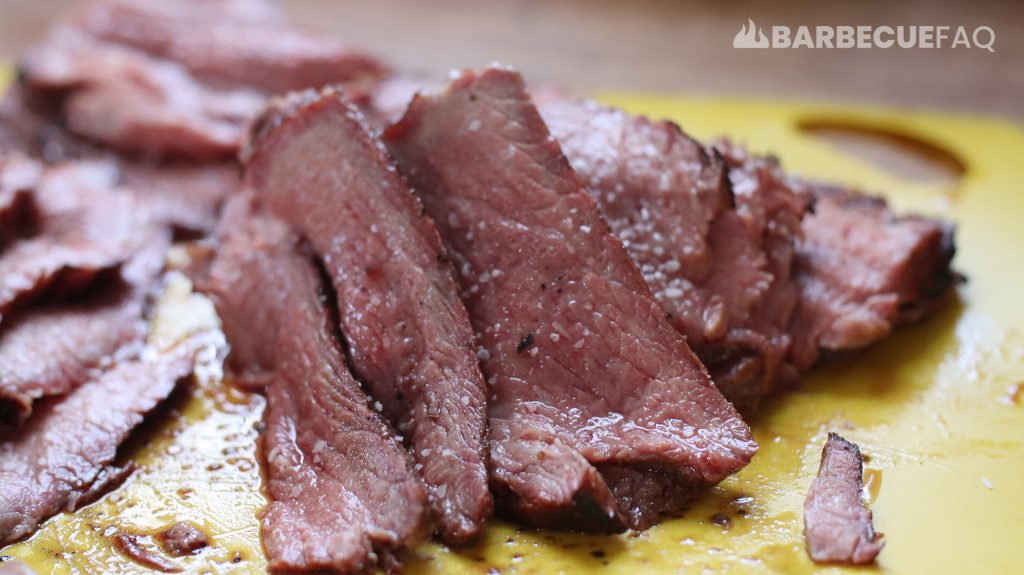Click a Cut to Jump to It
| Cut | $/ lb |
|---|---|
| Pork Butt | ~$1-2 |
| Whole Chicken | ~$2 |
| Pork Loin | $1-3 |
| Whole Spare Ribs | $2-4 |
| Chuck Roast | $3-5 |
| Jerky | $4-5 |
1. Pork Butt ~$1-2/lb
It’s the cheapest and one of the easiest cuts of meat to smoke on the entire pig.
If you can’t find pork butt, a decent substitute is Pork picnic.
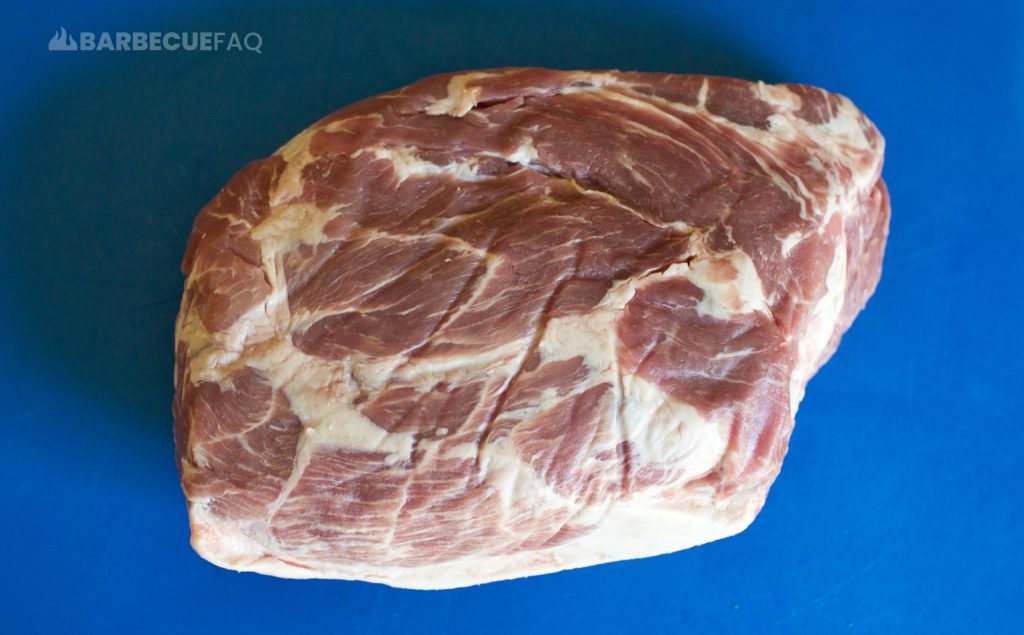
Pork picnic is sometimes even cheaper than pork butt and it comes with the skin-on so you can add some “cracklin'” to the pull.
But the pull is more stringy and tastes more “hammy.”
In most cases, pork butt is smoked until tenderness and then shredded for pulled pork:

Unlike a lot of other meats, selecting a pork butt is pretty forgiving.
All there is to consider is:
- Bone-in or boneless
- Weight of the roast
You might even consider looking at the money muscle that’s found on the opposite end of the blade bone.
This “money” muscle is basically a better pork tenderloin, only it’s smaller.
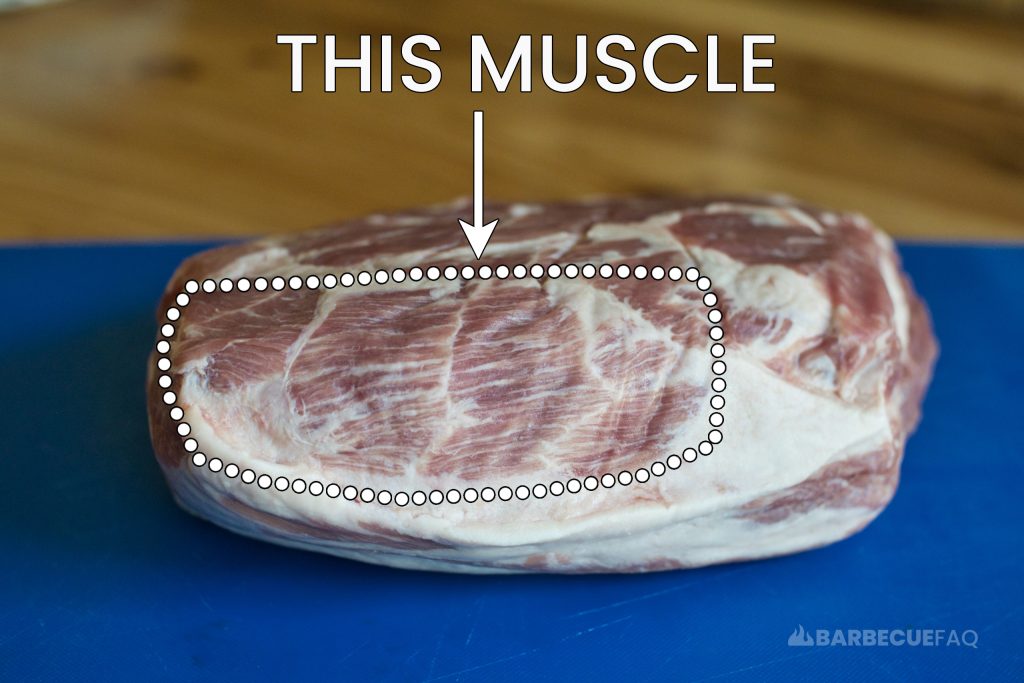
2. Whole Chicken ~$1.50-2/lb
OR really any part of the chicken:
- Halves,
- Leg quarters,
- Drums,
- Thighs
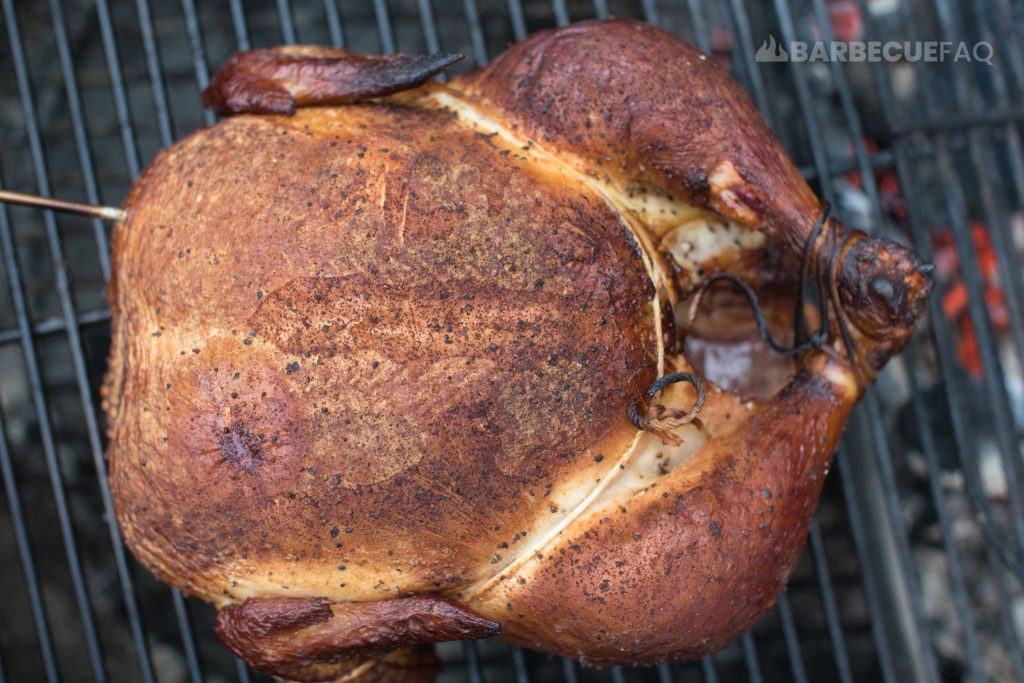
Whole chicken is a fast smoke as you’re limited by the breast meats internal temperature; Past 165F it starts drying out rapidly.
Instead you smoke until around 157-162F and then let the bird rest/carry over to 165F, then slice.
Dark meat is even easier as you can push the internal to around 200F without drying the meat out.
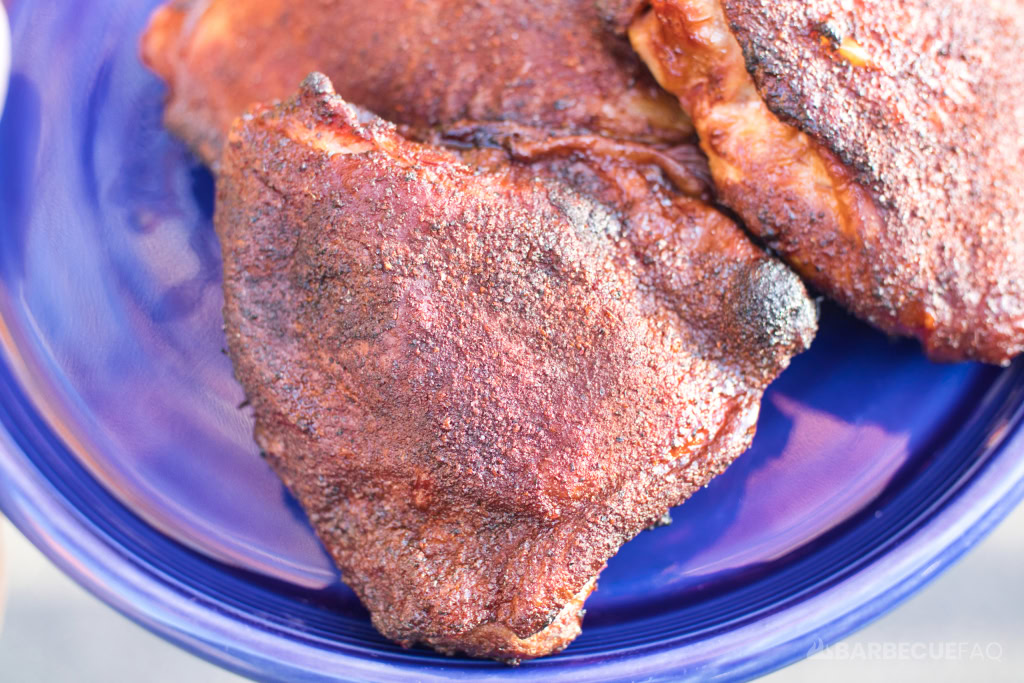
The amount of “smoke” you use is also minimal as poultry takes really well to smoke; One hour is typically more than enough.
The only cut that’s more expensive are the wings and the price also tends to rocket up during BBQ season.
3. Pork Loin ~$1-3/lb
If you need to feed a lot of people, pork loin is a good option.
In your grocery store you’ll find it sold 3 ways:
- Whole,
- Halved (sirloin end + center loin)
- Halved (blade end + center rib)
A whole pork loin cut up into “parts” looks like this:
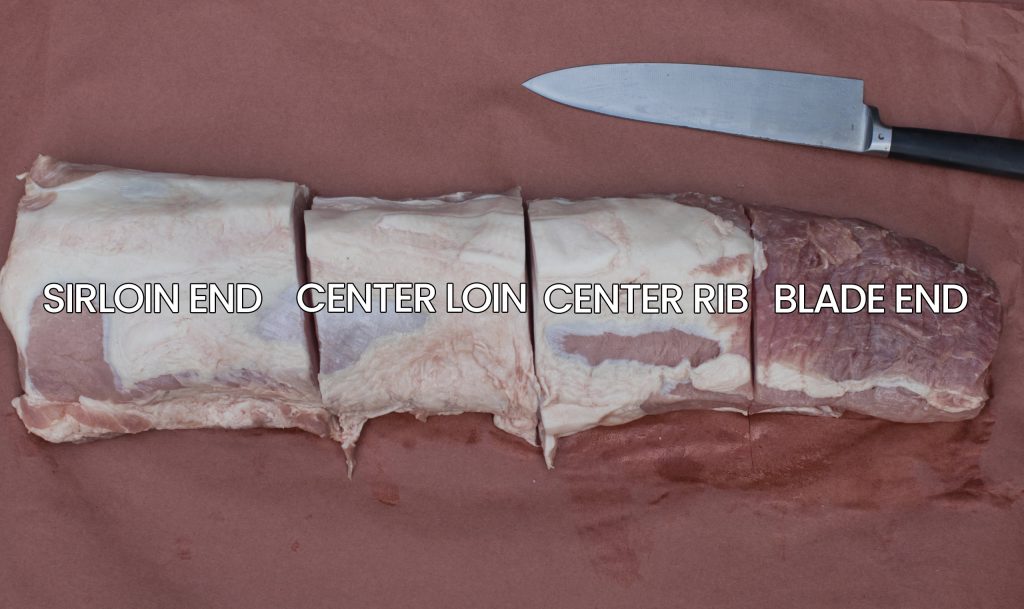
The sirloin end is far leaner – that’s where you get your boneless pork chops.
The blade end is more marbled and “looser” as it’s close to the pork butt.
If you’re smoking the sirloin half you’re probably turning into slices.
If you’re wanting to pull the meat, you’re much better off using the blade half as it has far more fat.
Either half is also the same price per lb so it pays to check what you’re buying, just check the ends.
The blade half is “relaxed” and looks similar to a pork butt in the package:
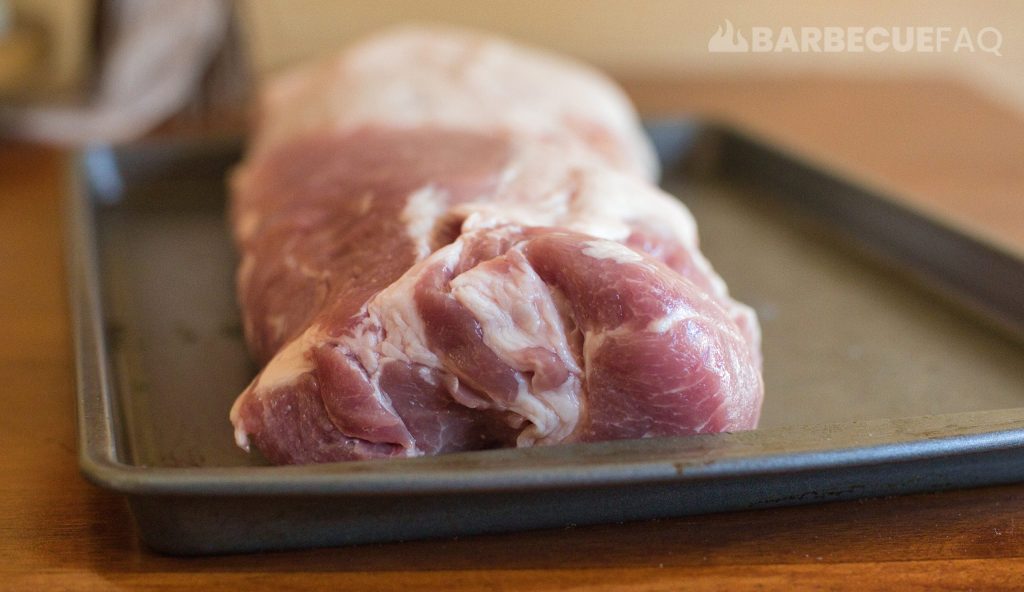
4. Pork Spare Ribs ~$2-4/lb
Baby back ribs are marketed far better and are loin mean, so they’re more expensive.
But spare ribs are belly meat and are much cheaper – and can feed more people.
They’re also fattier and have less of a chance of drying out.
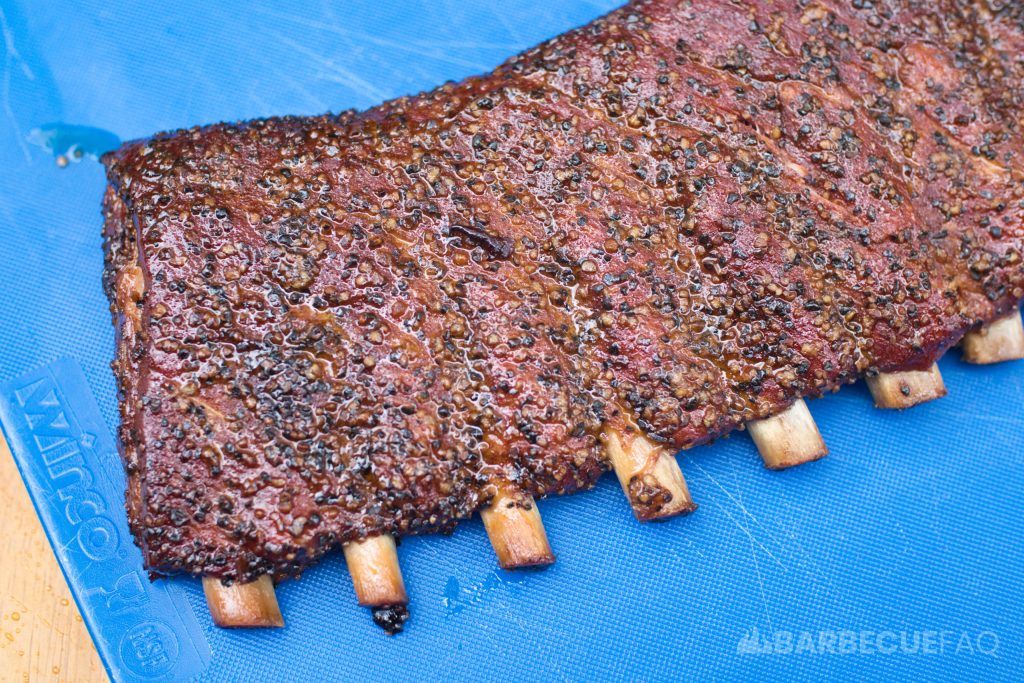
The only time their price will go up is when you buy them as a “St. Louis cut.”
This is a style of trimming that removes the chine bone, rib tips, and flap meat.
5. Chuck Roast ~$3-5/lb
Chuck roast is probably the most versatile cut of meat on the cow.
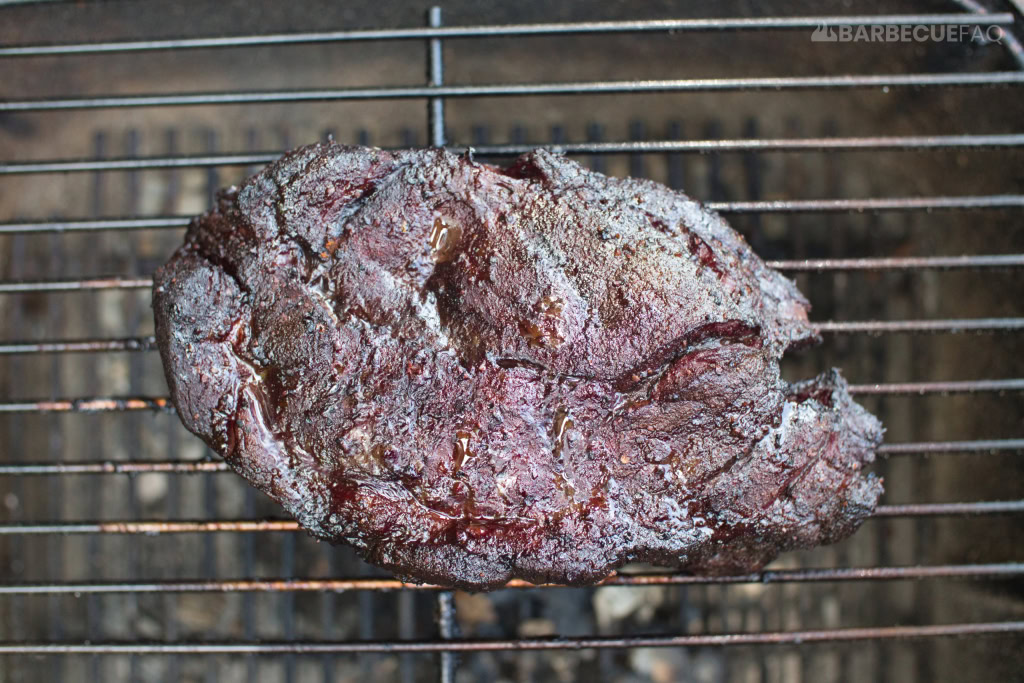
It’s beefy, has good marbling, is easy to smoke, and has a similar taste to brisket – only a tad more pot-roast-y.
You could opt to:
- Smoke it whole and turn out slices like brisket flat.
- Cube it up and smoke it like burnt ends.
- If you’re sick of pulled pork you could shred the meat and turn it into chopped beef for sandwiches.
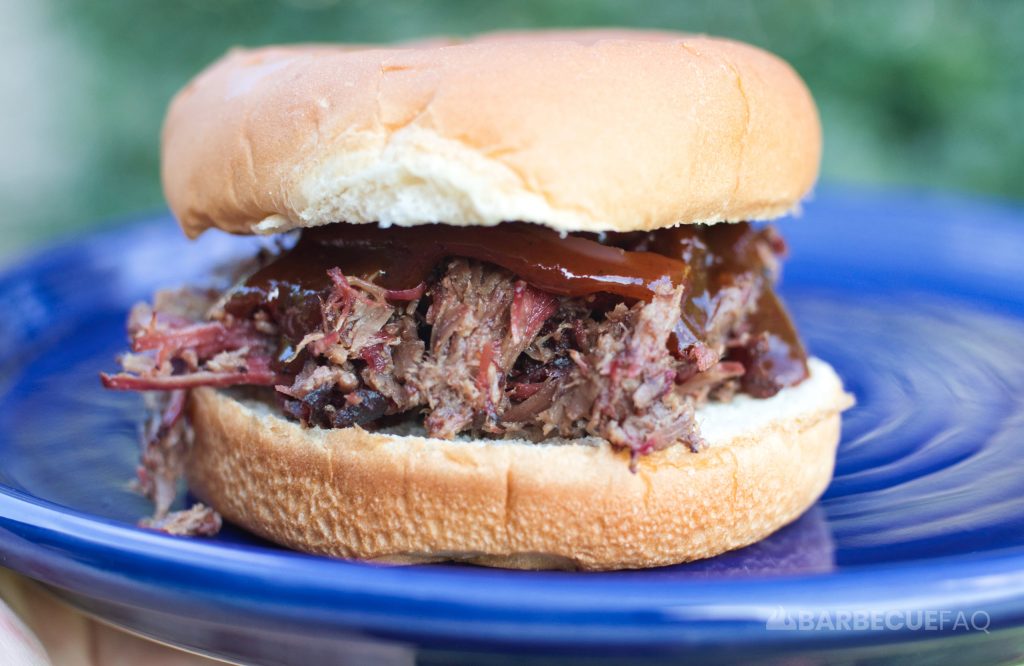
6. Beef Jerky ~$4-5/lb
For some reason almost no articles mention jerky.

As long as the cut of meat is lean, it can be sliced thin to make jerky.
Some of the most popular include:
- Top round
- Bottom round
- Eye of round
- Brisket flat
All of these cuts are usually ~$4-5/lb.
Top round is more tender and is typically more expensive at around $5-6/lb.
If you’re looking to make jerky and are wondering if the meat is good for doing so, ask yourself:
- Is it cheap?
- Is it lean? If there is fat, is it marbling or a fat cap?


